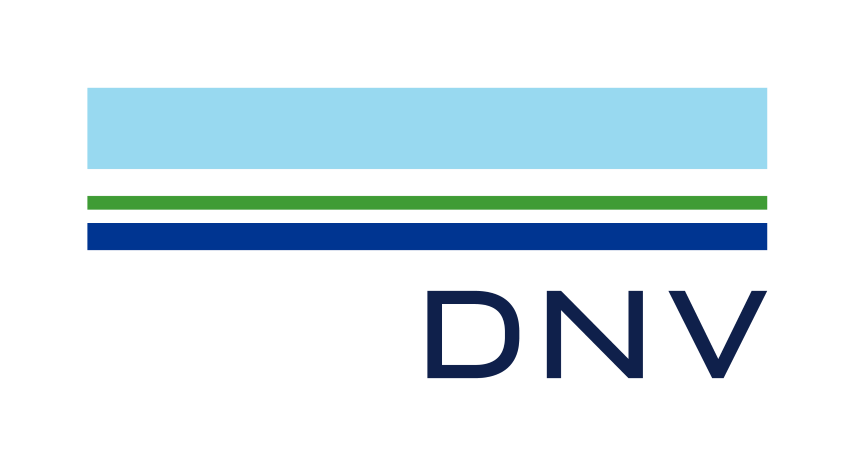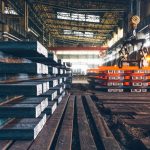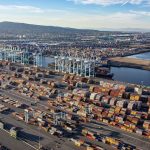Additive Manufacturing technology is making steady advances. While the automotive and aerospace industries, where weight reduction is key to maximizing fuel efficiency and minimizing carbon emissions, have benefitted from AM for a number of years, the maritime sector has only recently begun to explore the opportunities offered by layer-by-layer 3D printing. There are two main fields of interest: establishing a local supply infrastructure for 3D-printed spare parts in major ports to accelerate delivery and exploiting the unique capabilities of AM technology to make parts no other manufacturing process can produce.
Scrutinizing materials and processes for class approval
Several factors set the maritime industry apart from the aerospace and automotive sectors: Many components are much larger and heavier; and the safety of life and property at sea depends on a different set of criteria. As a classification society, DNV must ensure that the processes, materials and equipment used to manufacture critical ship components meet the applicable class requirements. This means that when a new manufacturing technology comes into play, appropriate standards and rules must be defined against which to test.
New DNV rules pave the road for AM
Since DNV began exploring the potential of AM for the shipping industry in 2016, a number of joint industry projects have been formed to build know-how and engage in a constant dialogue with industry stakeholders to learn about the needs of the shipping industry and its suppliers. This has resulted in a framework of new rules and guidelines, which form the basis for DNV’s qualification, certification, verification and class approval activities. “Contrary to most other classification societies, which just have Recommended Practices,” says Ramesh Babu Govindaraj, Principal Material Specialist at DNV Maritime, “DNV actually has class rules for Additive Manufacturing so AM materials, processes and components can be included in the classification regime. This benefits both the designer and the OEM because the AM-manufactured parts will be accepted for the classification regime. This means that class accepts the AM process the same way it has been accepting rolling, forging and casting.”
Added benefits for the OEM and the ship owner include the availability of the stored digital design file for the part as well as the option to have the part printed when a spare is needed.
In the blown-powder technology (BPT) process, a laser beam melts metal powder blown in an annular pattern from a nozzle.
Approvals of Manufacture, qualification of parts
So far the work of the DNV experts in this field has been focused on metallic parts but will include non-metallic materials from 2022, says Dr Eva Junghans, Senior Principal Engineer and Lead of Practice – Materials & Welding and Additive Manufacturing at DNV Hamburg. “In 2018, DNV issued the first Additive Manufacturing Approval of Manufacturer certificate to thyssenkrupp Marine Systems, giving thyssenkrupp TechCenter Additive Manufacturing the status of a DNV-approved supplier for maritime and general industrial applications. Further approvals of different manufacturers as well as qualifications of parts supplied to the maritime industry, and approval processes are underway.” Manufacturer qualifications are required for classed components, the expert adds – without these approvals, ships are not allowed to install safety-critical AM components or replacement parts. “These parts are highly significant for the safety and/or functionality of a ship and a maritime or offshore structure.”
Lighthouse projects demonstrate the power of AM
As the industry discovers the benefits of Additive Manufacturing compared to casting and forging – such as better control of quality, a more consistent internal structure, innovative shapes and shorter delivery times – a number of unique projects have emerged, says Govindaraj. For example, DNV has issued a verification statement for a ship propeller with a two-metre diameter, made in a Wire Arc Additive Manufacturing (WAAM) process by SY Metal in South Korea. The WAAM process is twice as fast as conventional casting and provides a solution to avoid supply chain bottlenecks; what is more, WAAM-printed parts are generally characterized by higher strength due to a more regular microstructure when compared to castings whose microstructure varies from the surface towards the core. While the fatigue test of the prototype has yet to be carried out, this is a first step towards resolving an issue that is not uncommon, says Dr Junghans: replacing a ship propeller at short notice after it has been lost at sea.
Wire Arc Additive Manufacturing (WAAM)
The WAAM technique can be used to make a wide variety of parts. DNV has issued a feedstock type approval for a solid carbon steel wire made by voestalpine Böhler Welding. A crank disc for Kongsberg Maritime has been made of that wire, using ADDILAN equipment in a Joint Innovation Project (JIP) with partners representing all sections of the AM value chain. A DNV Qualification in Principle and Approval will be issued after successful testing.
WAAM-produced Panama chock, a special type of hawse hole with 20% higher load capabilities and a yield strength twice that of the traditional casting.
Furthermore, DNV issued a verification statement for a WAAM-produced non-class Panama chock, a special type of hawse hole. The load test showed that the part was able to handle loads 20% higher than the design specification and had a yield strength twice that of the traditional casting. Andrew Sales, Managing Director at AML3D is very happy about the good collaboration with the project partners Keppel Technology & Innovation (KTI) and DNV: “The solution we found has proven to be successful. The component is intended for non-class maritime applications and is the world’s largest additively manufactured shipboard fitting. The verification by DNV shows that AML3D’s patented Wire Additive Manufacturing (WAM®) process meets maritime industry requirements and provides a framework and pathway for further component production and verification. AML3D will continue to partner with customers to find unique solutions for its diverse customer base by exploring additional opportunities with 3D printing.”
Powder Bed Fusion (PBF)
Powder Bed Fusion (PBF), or Selective Laser Melting (SLM), is an AM technology that holds enormous potential for producing complex geometries. In this process, the part is created in a basin filled with metal powder. A high power-density laser beam is directed to specific locations of the powder surface to melt the powder forming a solid structure layer by layer. The excess powder is then recycled. PBF ensures highly specific density and consistent mechanical properties of the finished part and has been applied successfully to make components as complex as a heat exchanger. In an ongoing joint project with Kongsberg Maritime and AM specialist SLM Solutions, PBF has been used to create an innovative hollow thruster blade with a titanium internal honeycomb structure. The part is currently undergoing fatigue testing. Based on this project DNV is preparing a concept study to amend DNV standard B203 for Additive Manufacturing.
Blown Powder Technology (BPT)
A process similar to PBF, Blown Powder Technology (BPT) is a “directed energy deposition” process whereby a nozzle directs a laser beam surrounded by an annular metal powder and inert gas flow to the depositing location while the laser beam melts the powder. A unique joint project involving SHI, InssTek, KOS GLOBAL, PK Valve, KIMS, KAERI and DNV succeeded in manufacturing a bi-metal cryogenic valve, an industry first. The body of the valve consists of SUS316L stainless steel, whereas the inside, which will be exposed to the cryogenic media, is lined with a 3 mm layer of corrosion-resistant Inconel 625. The Korean specialist InssTek produced the part using simultaneous 5-axis motion. “There is no alternative process for combining two materials in such a complex geometry,” stresses Govindaraj. “The two materials are applied by two separate nozzles operating alternatingly. The method makes the product less expensive because the costly Inconel is only needed on the inside while the lower-grade stainless steel is entirely sufficient for the valve body.” The valve has passed the pressure tests. DNV issued a type approval for feedstock to the powder manufacturer, KOS GLOBAL, as well as an OEM approval to InssTek. “The success of this valve will be the first use case of multimaterial parts manufactured with metal 3D printing technology that will revolutionize not only the ship industry but will also shape the way we see today’s manufacturing practices across diverse industries,” states Se-ho Park, Vice president, InssTek.
This bi-metal cryogenic valve made using BPT has a stainless-steel body and an Inconel inner lining.
JIPs drive the development of rules
DNV’s work on Additive Manufacturing continues. In several JIP consortiums, the Maritime and Energy Systems business areas of DNV are jointly developing new standards. The Singapore Maritime and Port Authority (MPA), which has shown strong interest in promoting AM in the maritime sector, has been involved in a number of AM initiatives. The Global Additive Manufacturing Technology Centre of DNV’s Energy Systems in Singapore is supported by the Singapore Economic Development Board (EDB) and focuses on AM research as well as advisory services and industrial certification. DNV Maritime provides class approval services and verifications for ships and offshore structures, which involve a wider scope of requirements, tests and on-board trials.
Dr Luis Alejandro Orellano, Chief Operating Officer at thyssenkrupp Marine Systems, emphasizes the importance of certification for a manufacturer: “We are delighted that with thyssenkrupp TechCenter Additive Manufacturing we now have a certified partner who can supply thyssenkrupp Marine Systems with additive manufactured parts that meet both our own and our customers’ high expectations. Together we are putting innovative solutions into our submarines and ships, setting new standards for the navy of the future.”
“The DNV pathway for Additive Manufacturing has made great strides towards making AM a key technology for safety-critical, classed as well as non-class ship parts and components,” says Dr Junghans. “As more AM materials, processes, manufacturers and individual part designs receive class approval, ship owners and yards will be able to rely on a growing list of components whose design has been optimized for the intended application, and which feature better, i.e. more regular, material properties and can be made available faster and at a lower cost.”
Source: Hellenic Shipping News






